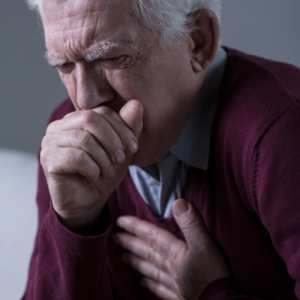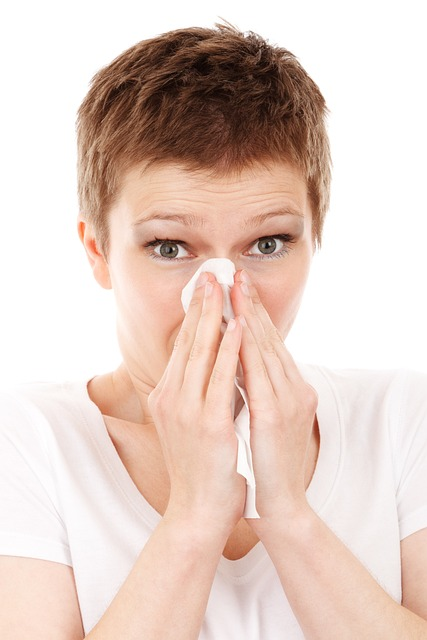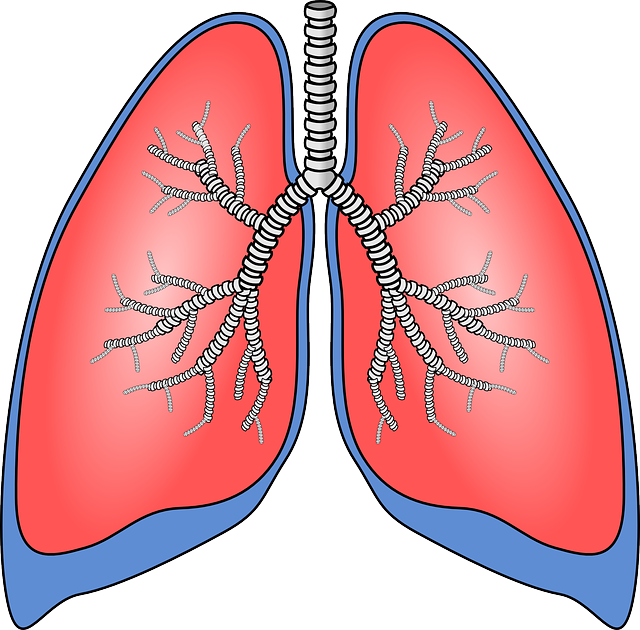Working Out With Sore Throat: Is It Okay?
We can all relate to this scenario. Maybe you’re almost at the point of achieving your goal of working out for seven consecutive days, or you’ve recently started a new aerobic exercise program, or you’ve made power walks a regular part of your post-lunch routine. Suddenly, you wake up with a sore throat, which couldn’t have happened at a worse time.
You don’t want to lose the motivation and momentum you’ve built up, particularly if you’re not feeling terribly sick. But at the same time, you don’t want to exacerbate your symptoms and make yourself feel worse. So…
Is working out with sore throat a bad idea?
Whether you should continue your exercise routine depends on the accompanying symptoms and the type of illness the sore throat is linked to.
In this Throat Cleaner and Throat Health blog post, we’ll discuss when exercising with a sore throat is safe and even beneficial and when it can harm your health. If you want to get even more knowledge about your throat’s health then check out our 9 Simple Throat Hygiene Tips for Maintaining Healthy Vocal Cords and The Aging Voice: How Aging Affects Throat Health guides!

- New Report Says Your Brain Could Be the Key to Reducing Phlegm Over 50
- Doctor's "Leave The Throat Phlegm Behind" Tutorial Goes Viral With People Over 50
- Can You Relieve Throat Phlegm and Coughing In 60 Seconds A Day? This Doctor Says Yes
- How To Banish Phlegm When 50+ (Do This Every Day)
Short Summary
- Understand the “above-the-neck” and “below-the-neck” rules for working out while sick or your throat is sore.
- It may be okay to exercise with certain illnesses, such as cold or flu, but only if the symptoms are above the neck and you feel up to it. You should generally not exercise when ill with bacterial pneumonia, bronchitis, or strep throat.
- You should listen to your body while exercising when ill. If you feel exhausted soon after beginning a workout, taking time off is best to give your body a chance to heal.
The “Above-the-Neck” Rule
Experts often use the “above the neck” rule when working out while sick. This means that if you are only experiencing above-the-neck symptoms like a sore throat, sneezing, nasal congestion, or earache, engaging in mild exercise for a shorter period is generally safe if you feel up to it (1).
However, if you are experiencing below-the-neck symptoms such as fever, muscle aches (myalgia), nausea, diarrhea, chest congestion, or coughing up phlegm, it may be best to skip your normal exercise routine until you feel better.

Safe to Exercise Conditions and Symptoms
If you have a sore throat with the following “above the neck” conditions and symptoms, the general rule is that it is okay to exercise as long as you observe some general guidelines.
The Common Cold
The common cold is an infection of the upper respiratory tract (i.e., nose and throat), the symptoms of which are caused by more than 200 different viruses. It is incredibly contagious and is the most prevalent illness in the United States.
According to the American Lung Association, “Adults get an average of two to four colds per year, mostly between September and May [and] young children suffer from an average of six to eight colds per year.” (2)
Common cold symptoms include:
- Scratchy sore throat
- Nasal congestion
- Runny nose
- Coughing
- Sneezing
The symptoms of a cold usually resolve within seven to ten days.
Generally, working out with a cold is okay as long as none of your symptoms are below the neck, like chest congestion. Indeed, exercise helps strengthen your immune system and may help you thrive during cold and flu season.
Studies indicate that “moderate intensity” exercise can reduce the number of colds you contract. In another study, women who walked 30 minutes daily for one year had half the number of colds compared to those who did not exercise. The reason? Regular walking can increase white blood cells, which are responsible for fighting off infections.
However, it would be best if you always listened to your body. If you’re feeling exhausted or winded because you can’t breathe easily through your nose due to congestion, you may want to reduce the intensity and duration of your workout routine.

Influenza
Influenza, also called the “flu,” is a contagious viral infection that can affect the upper and lower respiratory systems, i.e., nose, throat, and lungs.
Like the cold, the flu is widespread, affecting an estimated 27 to 54 million people in the United States from October 1, 2022, through April 30, 2023 (3).
The seasonal flu can lead to many hospitalizations, especially for young children, adults over 64 years old, and individuals with specific chronic medical conditions. The most effective method to reduce the risk of contracting the flu and its potentially serious consequences is vaccination.
Flu symptoms can include:
- Sore throat
- Runny nose
- Sneezing
- Cough
- Body aches
- Fever
- Chills
- Headache
- Chest congestion
- Vomiting

Can you continue working out while you have the flu? Yes…and no. Experts recommend taking a break or performing light exercises, giving your body a chance to recover. Your immune system works best when it’s not overworked.
If you’re experiencing a fever, chest congestion, and/or vomiting, it’s best to skip your workout. Typically, a fever lasts 2 to 5 days when you have the flu, which means your body is fighting the infection. Working out with a fever or periodically vomiting can dehydrate you, which could delay your recovery.
This leads us to a critical point.
Below the Neck Conditions and Symptoms – Do Not Work Out
Below-the-neck symptoms include upset stomach, nausea, vomiting, diarrhea, lung congestion, etc. The following are three conditions characterized by some of these symptoms. Experts recommend that you do not work out with these symptoms and conditions or, at the very least, seek your medical provider’s advice beforehand.
Bacterial Pneumonia
If you are experiencing a wet cough or coughing that produces mucus, it is advisable to avoid physical activity. Studies have shown that wet coughing is commonly associated with bacterial infections in the lower respiratory tract, such as pneumonia (4). Bacterial pneumonia usually causes more intense symptoms than other forms of the illness (5).
Other symptoms of bacterial pneumonia include:
- High body temperature (fever) with chills
- Chest or back pain when coughing
- A feeling of bodily weakness
- Fatigue
- Shortness of breath
- Nausea/vomiting
- Diarrhea
- Loss of appetite

Bronchitis
Bronchitis is characterized by inflammation of the bronchial tubes, the airways responsible for carrying air to the lungs. This condition may cause a persistent hacking cough accompanied by mucus production.
Other symptoms of bronchitis include:
- Shortness of breath
- Wheezing
- Tightness in chest
- Low-grade fever
- Fatigue
Experts recommend waiting until symptoms subside before engaging in any physical exercise.
Strep Throat
Strep throat is a bacterial infection that spreads quickly and affects the throat. It’s estimated that around 30 million cases are diagnosed every year. Although it’s more common in children and those with weakened immune systems, it can happen to anyone at any age.
Symptoms of strep throat include:
- Redness in throat with pus or white patches on tonsils
- Mild sore throat
- Severe sore throat
- Pain while swallowing
- Headache
- High fever
- Chills
- Skin rash that feels like sandpaper
- Swollen glands in the neck
- Nausea/vomiting
- Body aches
- Swollen tonsils
- Tiny red spots on the roof of your mouth
Should you exercise with strep throat?
Experts advise against exercising with strep throat due to a few of its symptoms.
Fever. Your body temperature rises as you exercise. So, if you’re running a fever, exercise can increase your body temperature even more, potentially leading to heat stroke.
Nausea/vomiting/diarrhea. These symptoms can lead to dehydration. It’s easier to get muscle cramps and spasms when dehydrated, so it’s best to wait until your symptoms disappear before exercising.
Chest tightness or congestion. Your lung capacity may be reduced, or you may have an airway infection, affecting your breathing.
Also, strep throat is a highly contagious illness, so you’ll want to avoid your normal workout routine in a gym if you are experiencing symptoms.
General Rules For Working Out While Sick
In addition to the above- and below-the-neck rule, below are several general rules you should keep in mind if you want to exercise while ill.

- Take it easy if you do not want to forego exercise while sick, at least reduce the intensity and duration of your exercise routine.
- Drink plenty of liquids. Staying hydrated is always essential, but it becomes even more vital when the body is recovering from sickness. During this time, the body will likely use extra fluids to eliminate toxins and may also lose fluids through sweating and a runny nose. Ensuring you stay hydrated while working out and throughout the illness can help prevent the adverse effects of dehydration.
- Replenish electrolytes. It’s crucial to replenish electrolyte salts when exercising, as even something as minor as a runny nose can cause their depletion. This becomes particularly crucial when adding a sweaty workout to the mix. To restore these electrolytes and ensure the body functions correctly, it’s recommended to drink liquids like coconut water, broth, miso soup, or sports drinks.
- Eat a healthy diet. In addition to maintaining an exercise routine, consuming a nutritious diet incorporating a diverse selection of fruits and vegetables is a highly effective method of strengthening the immune system and avoiding illnesses. These wholesome nutrients are also necessary for the body to recover from infections.
- Don’t overdo a workout. Avoid straining the body to its maximum capacity with activities like sprints or heavy weightlifting. Instead, a brisk walk or bike ride can help blood flow without overexerting the body.
- Pay attention to how your body feels. Paying attention to your body and how it feels during a workout is crucial. If you start feeling exhausted after only a few minutes, it’s best to stop and let your body recover. Although it may be inconvenient, taking a break and resuming your usual exercise routine later will benefit your body in the long run.

Summary
Whether you should continue your exercise routine depends on the accompanying symptoms and the type of illness the sore throat is linked to.
It is generally okay to work out if your symptoms are above the neck, such as a runny nose, swollen nasal passages, and sore throat. You should avoid working out if your symptoms are below the neck, such as lung congestion, fever, and vomiting/diarrhea.
It is always a good idea to reduce the intensity and duration of your workout routine while recovering from an illness, regardless of whether your symptoms are above or below the neck.
Other strategies to help you feel better faster are replacing electrolytes by drinking coconut water or sports drinks, eating a healthy diet, and listening to your body.
Frequently Asked Questions
Is it a bad idea to workout when sick?
Exercise is generally permitted if you have above-the-neck symptoms, like sneezing, runny nose, and sore throat. But if you have below-the-neck symptoms, such as diarrhea, lung congestion, or fatigue, it’s best to rest and let your body recover.
Will my sore throat get worse if I workout?
If you have a minor sore throat, it could be a sign of seasonal allergies or the common cold. But it could also indicate a bacterial strep infection. If you exhibit other symptoms of this condition, you should see a medical professional for evaluation. Taking this seriously is essential, as excessive physical activity can lower your immunity and spread the infection to your respiratory tract. Therefore, taking things easy and engaging in moderate exercise is advisable.
Can you workout with congestion and sore throat?
If you feel well enough, you can exercise safely when your symptoms are confined to the upper part of your body, such as having a slight sore throat, runny nose, or congestion. However, it is advisable to take it slow and decrease the intensity or length of your workout, particularly if you feel you have less energy than usual.
Does exercise help you get over a cold?
Many believe exercising while sick can help them “sweat it out.” Though exercise is known to strengthen the immune system, there is no evidence to suggest that exercising while suffering from the common cold can reduce the duration of the illness or its severity.

- New Report Says Your Brain Could Be the Key to Reducing Phlegm Over 50
- Doctor's "Leave The Throat Phlegm Behind" Tutorial Goes Viral With People Over 50
- Can You Relieve Throat Phlegm and Coughing In 60 Seconds A Day? This Doctor Says Yes
- How To Banish Phlegm When 50+ (Do This Every Day)
References
1- https://www.ncbi.nlm.nih.gov/pmc/articles/PMC7123245/
2- https://www.lung.org/lung-health-diseases/lung-disease-lookup/facts-about-the-common-cold
4- https://academic.oup.com/comnet/article/doi/10.1093/comnet/cnab039/6426106


